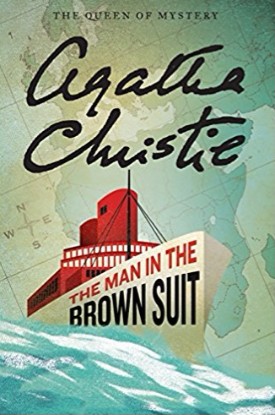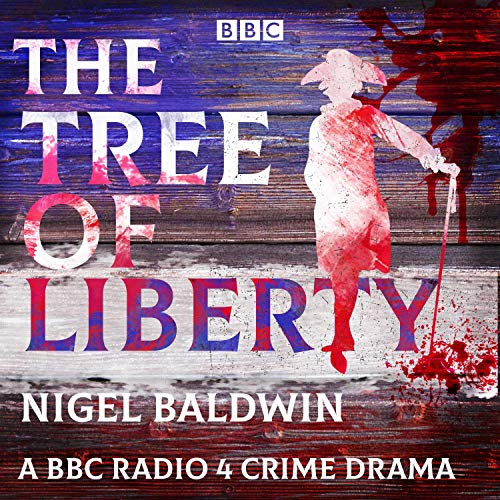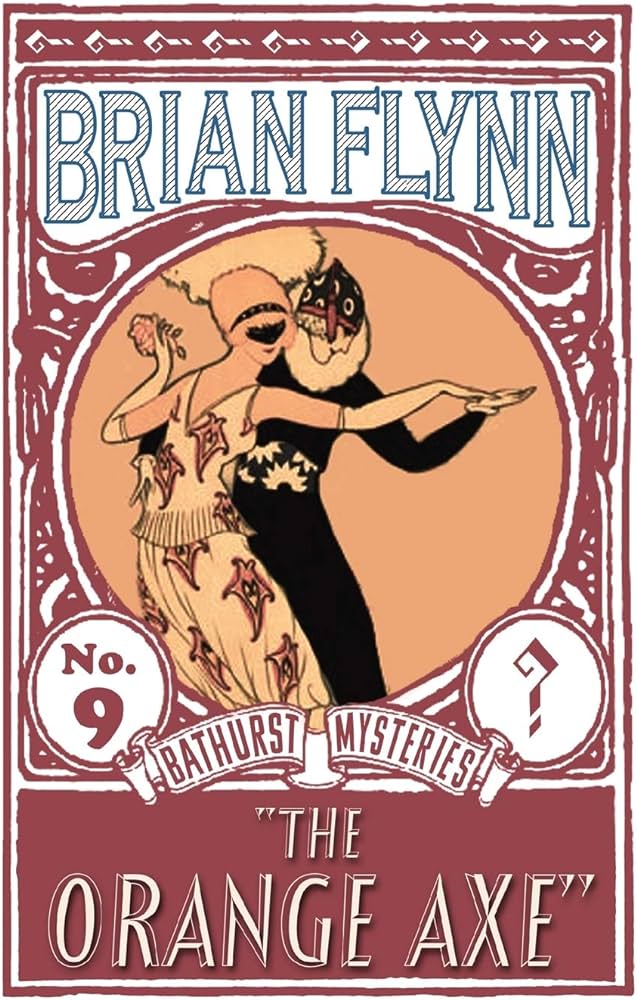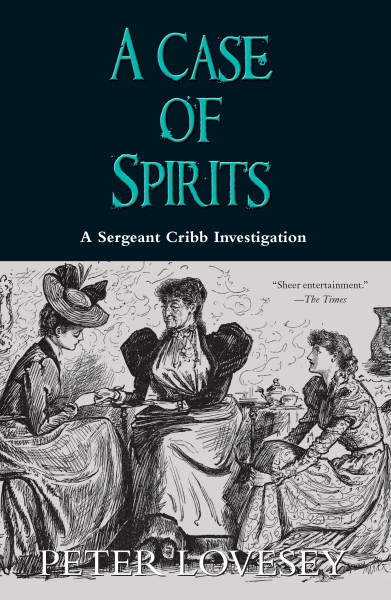
Agatha Christie
Originally Published 1924
As you may recall, I had originally planned to read The Man in the Brown Suit last month as part of my efforts to read all of the non-series Christie novels in order. A mishap with my copy of the book forced me to go in a different direction but I am happy to have finally got around to it.
A lot of what I will be writing about relates in some sense to the labels we use to categorize fiction. These days the boundaries between thriller, adventure, mystery and suspense have become increasingly blurred but genre will still inform the reader’s expectations of a book.
Many reviews of The Man in the Brown Suit will suggest that this book is not really a detective story but that it actually belongs to the thriller genre. The expectation being that the reader should be braced for a story that focuses entirely on the movement of the story and elements of intrigue rather than the process of ratiocination.
Those reviewers who view the book purely from that perspective are certainly correct to draw attention to those thriller elements. There is a very real sense of motion throughout the story as we see the heroine, Anne, begin by moving from the countryside to London, witnessing a suspicious death and learning of another, then boarding a intercontinental liner travelling to South Africa before journeying through parts of that country. In her travels she finds a secret message to decode, an enemy to sniff out and a romance while at points she is kidnapped. All solid thriller material.
There is however a puzzle present too that the reader can consider and participate in – who is the mysterious crime lord known as the Colonel?
Like in any other Christie mystery we have a selection of potential villains to pick from and there are some clues dropped as to that person’s identity. The reader has the potential to deduce who might be the villain prior to the reveal using clues within the book. In short, we have a real mystery on our hands so why is it viewed almost exclusively through the lens of the thriller and does it really matter how the book was marketed?
Addressing the first question – part of the reason is that Christie will undermine the mystery here with some of her subsequent novels as she brings back one of the characters from this adventure as a sleuth. That in itself is an interesting choice and I’ll hold off on discussing that until it’s time to talk Cards on the Table but if you know that character is not the crime boss (and, to be honest, it would be a little on the nose) then your pool of suspects becomes a little too small.
While there is a mystery there for the reader to puzzle out, Christie places the reader’s attention onto her novel’s adventure elements. In short, the mystery becomes hidden by the other elements of the setting. The reason this matters is that Christie utilizes an idea in this story that she would gain far more attention for using a few years later in another novel.
At this point, if you care about being spoiled for this book you should look away. Scroll down and I’ll use bold type to indicate when you can look again!
Christie utilizes a structural device designed to play on the reader’s expectations about what they are reading. The novel is divided into narratives from two separate characters, recollections from Anne, the spirited young woman who dreams of adventure, and sections from Sir Eustace’s private diary. Christie gives each character a quite distinct way of writing and I found the result to be quite entertaining, particularly the diary entries which are often very funny.
Christie’s reasons for doing this are to allow the reader to make false assumptions based on their expectations that a first person account from a narrator is likely to be true. What intrigues me most about this is that it does not seem that this aspect of the book is viewed as particularly remarkable at the time yet when Christie revisits the idea in a later Poirot novel it is the aspect of that book which everybody comments on.
There are a couple of reasons I can think of why this book wouldn’t attract the same level of notice as that other effort though I am not entirely sure how I would weight them. First, I think it is likely that because readers generally experience this expecting an adventure there is little of the sense of outrage at the idea that an author hasn’t played fair (even though, as I will no doubt argue when it comes time to talk that other novel – I don’t agree with that view of the ‘trick’).
Second, I think that by having two accounts the impact of that revelation is probably lessened a little. While both narrators are actually quite likeable, one is clearly more heroic than the other. We place our trust in them and we’re aware that as the other source is being presented as a document it has a slightly different status.
Finally, I suspect that the nature of the respective crimes means that we feel a little more betrayed in that other novel than we do here. Where in that novel we like the criminal less once we realize what they have done, here the guilty party is still strangely affable even in defeat. This, I feel, lessens the sense of shock for the reader and contributes to the moment of revelation feeling underplayed.
From this point onwards it is safe to resume reading!
While I would not describe it as a top tier Christie work, I think The Man in the Brown Suit does have a lot to commend it. Whether it is categorized as a thriller, adventure or mystery, I can say that I found it a very entertaining and enjoyable read. Christie’s story maintains a strong pace and I found both narrators to be charming and distinctive. I found the mystery of the Colonel’s identity fun and enjoyed the moment of revelation enormously.
I was a little less convinced by the romance, in part because we do not spend enough time with the characters as a couple to take this aspect of the plot too seriously but I don’t want to be too hard on this as it is fairly typical of this type of adventure. Similarly, I felt that the villain’s plan felt a little underdeveloped though I enjoyed the sequence in which they finally confront Anne and I particularly appreciated the coda given to that relationship in the final chapter.
It is that character and their relationship with Anne that I felt was the most successful and distinctive element of this novel and while the villain may not feature in a classic story or have a particularly striking plot, I found their personality to be memorable and engaging.
Vintage Mysteries Challenge: Color in the title (What)




Leave a comment